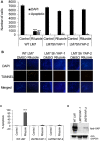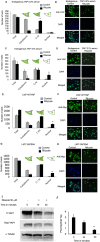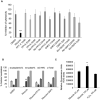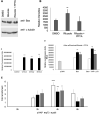Riluzole-induced apoptosis in osteosarcoma is mediated through Yes-associated protein upon phosphorylation by c-Abl Kinase
- PMID: 34697383
- PMCID: PMC8546089
- DOI: 10.1038/s41598-021-00439-8
Riluzole-induced apoptosis in osteosarcoma is mediated through Yes-associated protein upon phosphorylation by c-Abl Kinase
Abstract
Our lab has previously demonstrated Riluzole to be an effective drug in inhibiting proliferation and inducing apoptosis in both human and mouse osteosarcoma. Yes-associated protein is a transcription co-activator, known to be involved in cell proliferation or apoptosis depending on its protein partner. In the present study we investigated the role of YAP in apoptosis in osteosarcoma, we hypothesized that YAP may be activated by Riluzole to induce apoptosis in osteosarcoma. By knocking down the expression of YAP, we have demonstrated that Riluzole failed to induce apoptosis in YAP deficient osteosarcoma cells. Riluzole caused translocation of YAP from the cytoplasm to the nucleus, indicating YAP's role in apoptosis. Both Riluzole-induced phosphorylation of YAP at tyrosine 357 and Riluzole-induced apoptosis were blocked by inhibitors of c-Abl kinase. In addition, knockdown of c-Abl kinase prevented Riluzole-induced apoptosis in LM7 cells. We further demonstrated that Riluzole promoted interaction between YAP and p73, while c-Abl kinase inhibitors abolished the interaction. Subsequently, we demonstrated that Riluzole enhanced activity of the Bax promoter in a luciferase reporter assay and enhanced YAP/p73 binding on endogenous Bax promoter in a ChIP assay. Our data supports a novel mechanism in which Riluzole activates c-Abl kinase to regulate pro-apoptotic activity of YAP in osteosarcoma.
© 2021. The Author(s).
Conflict of interest statement
The authors declare no competing interests.
Figures







References
-
- Yang Y, Yang R, Roth M, Piperdi S, Zhang W, Dorfman H, Rao P, Park A, Tripathi S, Freeman C, Zhang Y, Sowers R, Rosenblum J, Geller D, Hoang B, Gill J, Gorlick R. Genetically transforming human osteoblasts to sarcoma: Development of an osteosarcoma model. Genes Cancer. 2017;8(1–2):484–494. doi: 10.18632/genesandcancer.133. - DOI - PMC - PubMed
-
- Mialou V, Philip T, Kalifa C, Perol D, Gentet JC, Marec-Berard P, Pacquement H, Chastagner P, Defaschelles AS, Hartmann O. Metastatic osteosarcoma at diagnosis: Prognostic factors and long-term outcome—The French pediatric experience. Cancer. 2005;104(5):1100–1109. doi: 10.1002/cncr.21263. - DOI - PubMed
-
- Geller DS, Gorlick R. Osteosarcoma: A review of diagnosis, management, and treatment strategies. Clin. Adv. Hematol. Oncol. 2010;8(10):705–718. - PubMed
Publication types
MeSH terms
Substances
Grants and funding
LinkOut - more resources
Full Text Sources
Medical
Research Materials
Miscellaneous

